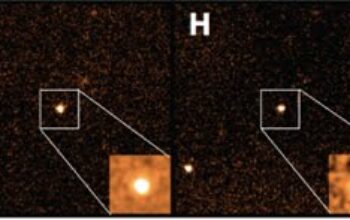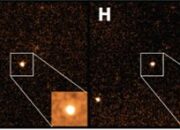Quantum computing represents a paradigm shift in the realm of computational theory and practice, heralding a new era defined by unparalleled processing capabilities. At the crux of this advanced computation architecture lie quantum bits, or qubits, which fundamentally differ from classical bits. Understanding quantum computing necessitates an exploration of the abstract complexities associated with qubits and their operational mechanics, along with insights into their potential applications and implications for various sectors.
1. Understanding Qubits: The Building Blocks of Quantum Computing
A qubit, the quantum analog of a classical bit, can exist not only in a state of 0 or 1 but simultaneously in a superposition of both states. This inherent property stems from quantum mechanics, which dictates that particles can exist in multiple states concurrently. In mathematical terms, a qubit can be represented as a linear combination of its basis states: |0⟩ and |1⟩. This superposition enables quantum computers to process a vast array of possibilities at once, vastly outperforming their classical counterparts in specific computational tasks.
In addition to superposition, qubits exhibit another fundamental characteristic known as entanglement. When qubits become entangled, the state of one qubit becomes intrinsically linked to the state of another, irrespective of the distance separating them. This phenomenon enables quantum computers to perform coordinated operations across multiple qubits, enhancing computational efficiency and capacity.
2. The Mechanics of Quantum Computing
The operation of quantum computing hinges upon quantum gates, which manipulate qubits in intricate ways. Unlike classical gates, which are definitive and binary in nature, quantum gates operate through unitary transformations. This means that the result of a quantum gate can produce multiple outputs from a single input. Such gates include the Hadamard gate, which facilitates the creation of superpositions, and the CNOT (Controlled-NOT) gate, which is pivotal in establishing entanglement.
The quantum state is manipulated via sequences of these gates to execute algorithms. Quantum algorithms, such as Shor’s algorithm for factoring large integers or Grover’s algorithm for unsorted database searches, exploit the unique properties of qubits to provide exponential speed-ups over classical algorithms. For instance, Shor’s algorithm can factor a number in polynomial time, thereby threatening the foundations of modern cryptography.
3. Decoherence and Error Correction
Despite their potential, qubits are susceptible to decoherence, a phenomenon where the quantum state of a system loses its coherence due to interactions with the external environment. This effect poses significant challenges in maintaining qubit fidelity over time, thus complicating the execution of quantum algorithms. Achieving practical quantum computation necessitates robust quantum error correction protocols to mitigate these adverse effects. Techniques, such as surface codes and stabilizer codes, have been developed to protect qubit states and allow for reliable computations even in the presence of errors.
4. Quantum Supremacy and Current Developments
Quantum supremacy refers to the point at which a quantum computer can outperform classical computers in solving specific problems. This milestone, achieved in controlled environments, has incited a flurry of research and investments in quantum technologies. Notably, companies like Google, IBM, and Rigetti are at the forefront, working on improving qubit coherence times, increasing the number of qubits, and enhancing quantum gate fidelity to approach practical quantum processing capabilities.
Different types of qubit implementations also exist, including superconducting qubits, trapped-ion qubits, and topological qubits. Superconducting qubits utilize Josephson junctions to create a superconductive state, while trapped-ion qubits exploit laser-cooled ions held in electromagnetic traps. Topological qubits, still largely experimental, promise increased stability by encoding information in the braiding of anyons, offering potential resistance to decoherence.
5. Applications of Quantum Computing
The ramifications of quantum computing are profound, spanning various domains. In cryptography, quantum computers could theoretically break widely used encryption schemes, compelling the evolution of post-quantum cryptography. The pharmaceutical industry stands to benefit immensely, as quantum simulations could be used to model molecular interactions and drug interactions with unprecedented speed and accuracy, ushering in a new era of drug discovery.
Moreover, quantum computing can significantly accelerate optimization problems found in logistics and finance. Industries such as telecommunications and manufacturing could employ quantum algorithms to optimize routing and supply chain decisions, thereby enhancing operational efficiency. Additionally, quantum artificial intelligence has the potential to revolutionize data analysis methodologies, enabling the processing of vast datasets at a remarkable pace.
6. Challenges and the Future of Quantum Computing
While the prospects of quantum computing are thrilling, substantial challenges remain. The quest for scalable, fault-tolerant quantum systems is ongoing, with significant investments aimed at overcoming the hurdles of qubit connectivity and coherence. Furthermore, the ethical implications of quantum advancements, especially in cybersecurity and data privacy, warrant rigorous examination as the technology matures.
In conclusion, the world of quantum computing, with its elegant interplay of qubits, entanglement, and superposition, signifies a tantalizing frontier of computational possibility. As research continues to unlock the quantum realm’s secrets, the implications for technology, industry, and society at large will likely be profound, ushering in exponential advancements that could redefine various fields. The journey towards ubiquitous quantum computing is both a challenge and an opportunity that beckons researchers and technologists alike.









